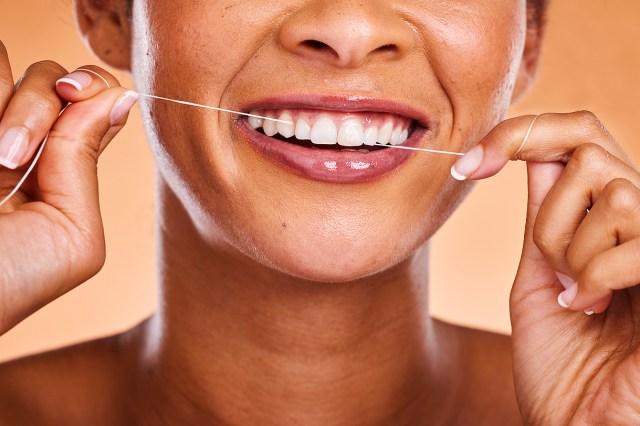Flossing is critical to good dental hygiene, preventing problems such as gum disease, cavities, and infections. But many people floss less frequently than they’d care to admit, and even those who do it regularly may not know the proper way to floss. While you probably do know when you should brush your teeth, where does flossing fit into your day? If you’ve ever found yourself in front of the bathroom mirror, wondering whether it’s better to floss before or after brushing your teeth, read on to upgrade your oral hygiene routine for the better.
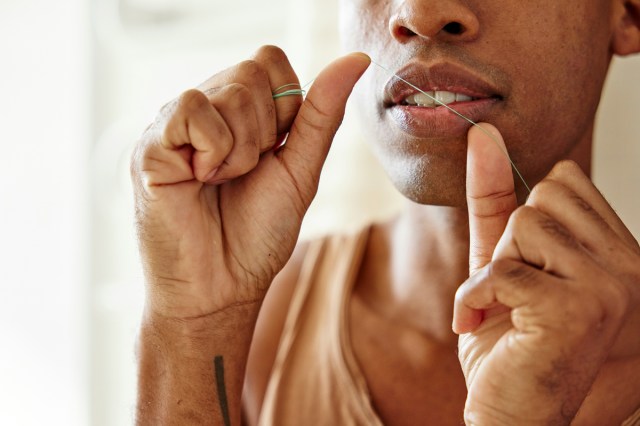
Always Floss Before Brushing
For best results, you should always floss before brushing. Flossing helps clear the gaps between your teeth before you use toothpaste, encouraging greater fluoride retention. By flossing first, you loosen food, plaque, and bacteria between your teeth, which makes removing those particles easier for your toothbrush.
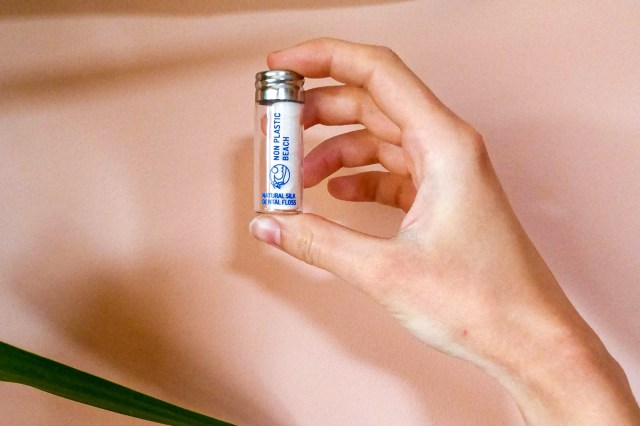
Floss Once Daily
While experts recommend brushing your teeth twice daily, you only need to floss once daily to maintain a healthy mouth. When you choose to floss is a matter of personal preference — flossing after waking up helps remove bacteria that has built up overnight, while flossing at night removes the plaque that has built up during the day.
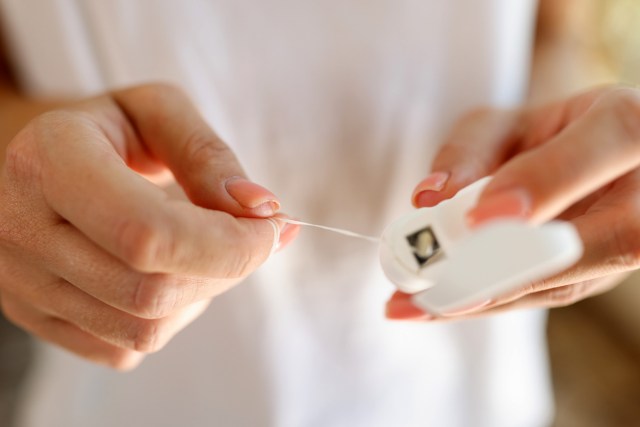
Use String Floss Instead of Floss Picks
If you have the choice, use string floss instead of floss picks. String floss is easier to maneuver, allowing you to tackle the gum line and reach difficult crevices. Use a long piece of string floss so you can use a clean portion of it for each tooth. Individual floss picks only contain a small amount of floss, which means you reintroduce plaque as you go from tooth to tooth.
Reader Favorites
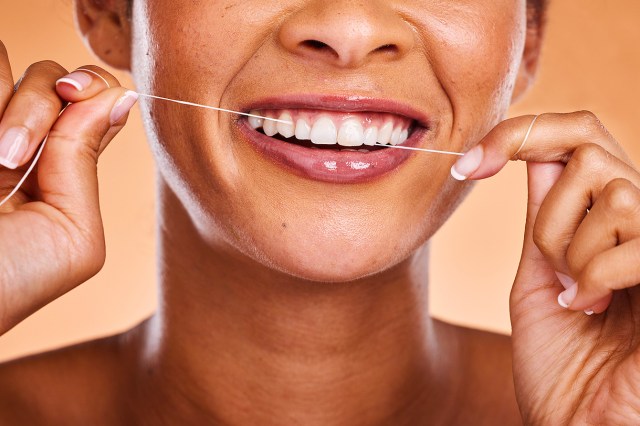
How to Properly Floss
Like most things, there is a correct way to floss. This technique will help you remove the most plaque and keep your teeth healthy.
1. Measure out roughly 18 inches of string floss.
2. Wrap the floss around both of your middle fingers, leaving about 2 inches on each end.
3. Grip the floss in the middle between your thumbs and forefingers. This will allow you to easily maneuver the floss in between the gaps of your teeth.
4. Insert the floss between two teeth. Press the floss against each tooth, curving it to get under the gums.
5. Gently but firmly rub the floss from the bottom of the gap to the top in a gentle back-and-forth movement.
6. Adjust the string as you move from gap to gap, using a clean portion of floss when plaque begins to build up on the string.
Featured Image Credit: PeopleImages/ iStock
More From Our Network
Better Report is part of Inbox Studio, which publishes content that uplifts, informs, and inspires.

